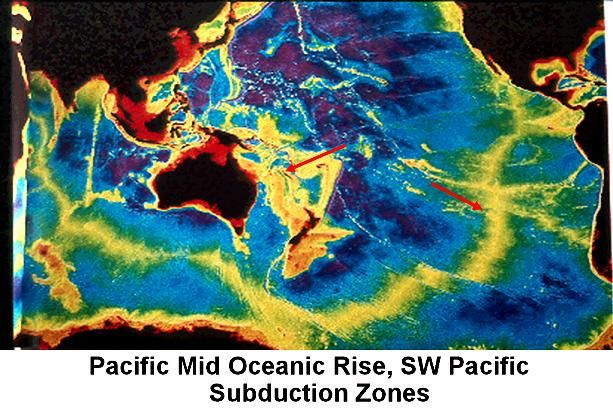 Geological research from New Zealand published today in the prestigious journal Nature highlights the crucial role of underground water in triggering powerful earthquakes.
Geological research from New Zealand published today in the prestigious journal Nature highlights the crucial role of underground water in triggering powerful earthquakes.
New Zealand is perched precariously on a major tectonic boundary, where the Pacific and Australian plates collide. The subduction zone beneath the South Island, formed as one plate dives beneath the other, is one of the youngest on the planet, and it is one of the few places where this process can be studied on land.
The new paper, from an international team including New Zealand researchers from GNS Science, examines the role of water crushed out of the Earth’s crust deep below the surface in triggering powerful earthquakes, changing the dynamics of the fault and eventually causing volcanoes to form.
Paper co-authors Grant Caldwell and Hugh Bibby of GNS Science comment:
“In actively deforming regions like New Zealand, deformation will promote electrical inter-connection of any fluid present in the rocks below the depth at which the rocks are hot enough to become slightly ductile or soft. Thus localised ductile shear zones containing small amounts of fluid will be conductive compared to their surroundings. Measurements of the low frequency electromagnetic waves produced by solar activity and world-wide thunderstorm activity allow us to see electrically conductive zones deep within the earth.
A line of these measurements (known as magnetotelluric or MT soundings) across the northern part of the South Island show that localized zones of high electrical conductivity occur about 15 km below some of the major faults in Marlborough. The results support the idea that the high conductivity zones observed below major strike-slip faults in New Zealand and elsewhere (e.g. the San Andreas Fault in California) mark ductile shear zones. This provides information on the deformation occurring beneath the part of the fault that breaks in large earthquakes and insight into the mechanisms that ultimately cause earthquakes.”
Dave Craw, Professor of Geology at University of Otago comments:
“Phil Wannamaker (lead author) and coworkers have made a huge contribution to our understanding of tectonic processes at the plate boundary by emphasising the importance of fluid. We usually have to make guesses about fluids at depth, but this work shows where the fluid is generated, where it migrates to, and gives us an idea of how much fluid there is. This is relevant to earthquakes, as the authors say, but also important for understanding how metals such as gold move around at active plate boundaries.”
Richard Sibson, Emeritus Professor, Department of Geology, University of Otago comments:
“By studying rocks deformed at depth in and around ancient fault zones, geologists have long suspected that aqueous fluids play an active role in weakening the crust and focusing deformation and, indeed, are intimately involved in the basic mechanics of fault rupture. The geophysical evidence discussed by Wannamaker et al. lends strong support to these ideas and shows further that such fluids may be deeply derived from the underlying subducting and dewatering slab, in agreement with comparable studies in areas of intense earthquake activity on unfavourably oriented faults within the crust of Japan. An interesting spinoff is that the fluid involvement with mid-crustal fault processes revealed by these techniques sheds light on the origin of a particular class of fault-hosted hydrothermal mineral deposit – the so-called mesozonal gold-quartz lode systems. In the mid-crust of the Marlborough and Buller regions we may therefore actually be witnessing mesozonal mineralisation in the making!”
A copy of the paper and a press release issued by the lead author’s institution — including images — is available for download in the SMC Resource Library.
Further Information
To follow up with these or other New Zealand experts, please contact the Science Media Centre on tel: 04 499 5476 or email: smc@sciencemediacentre.co.nz.